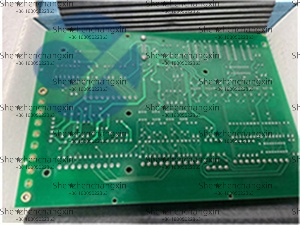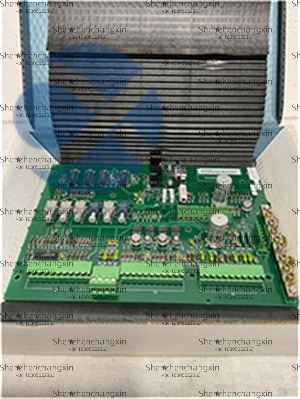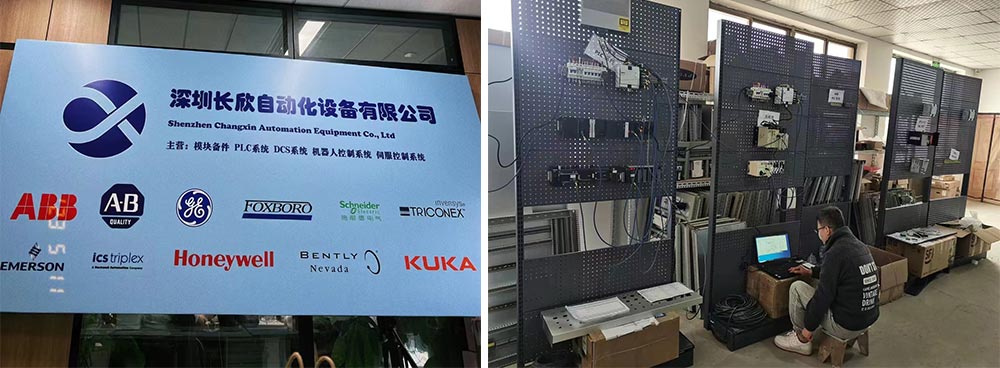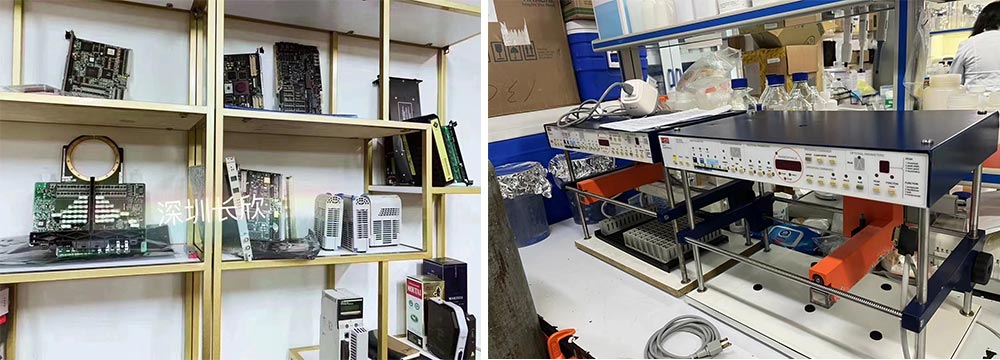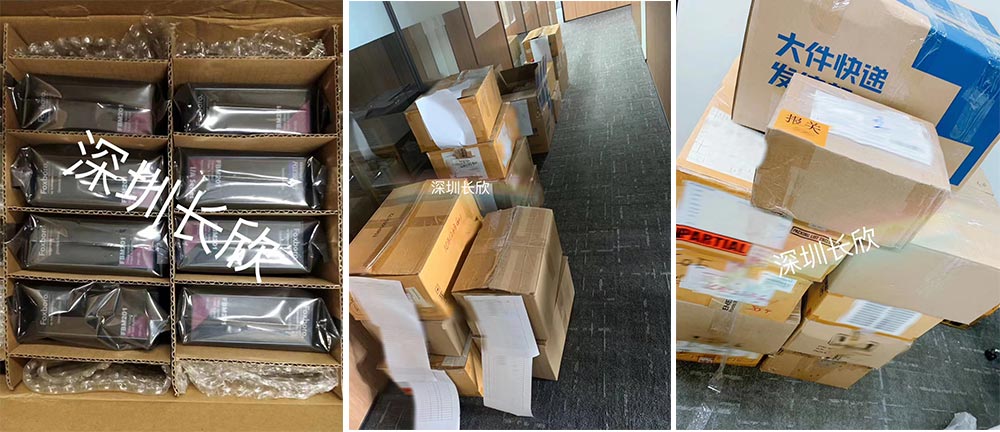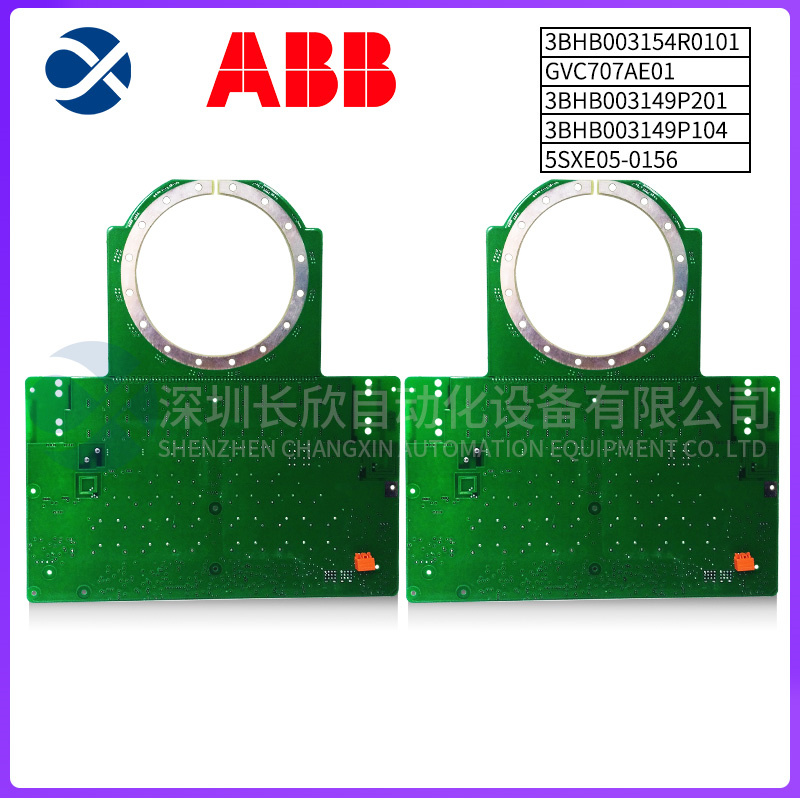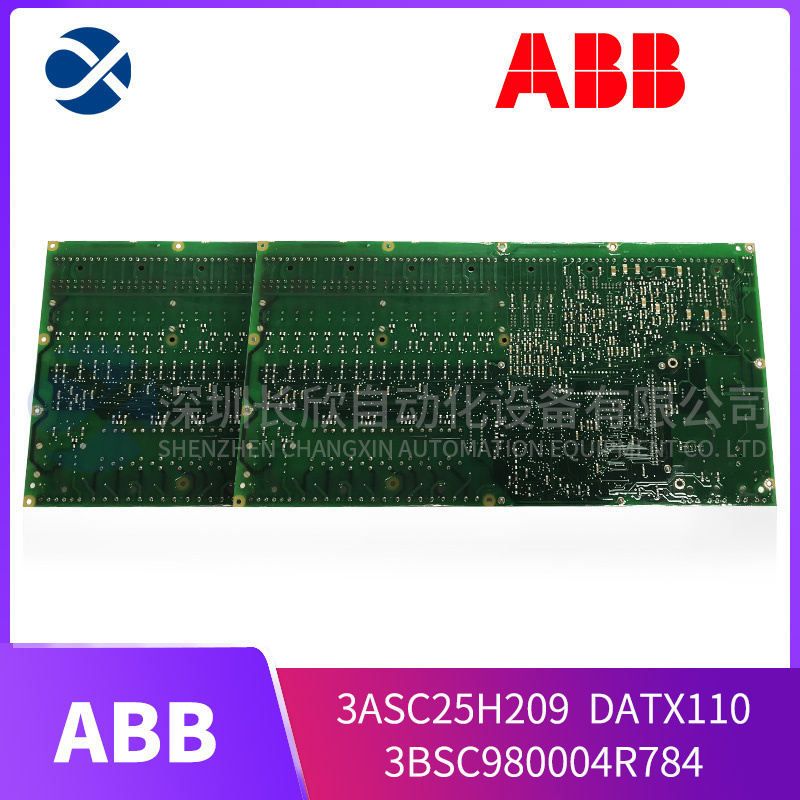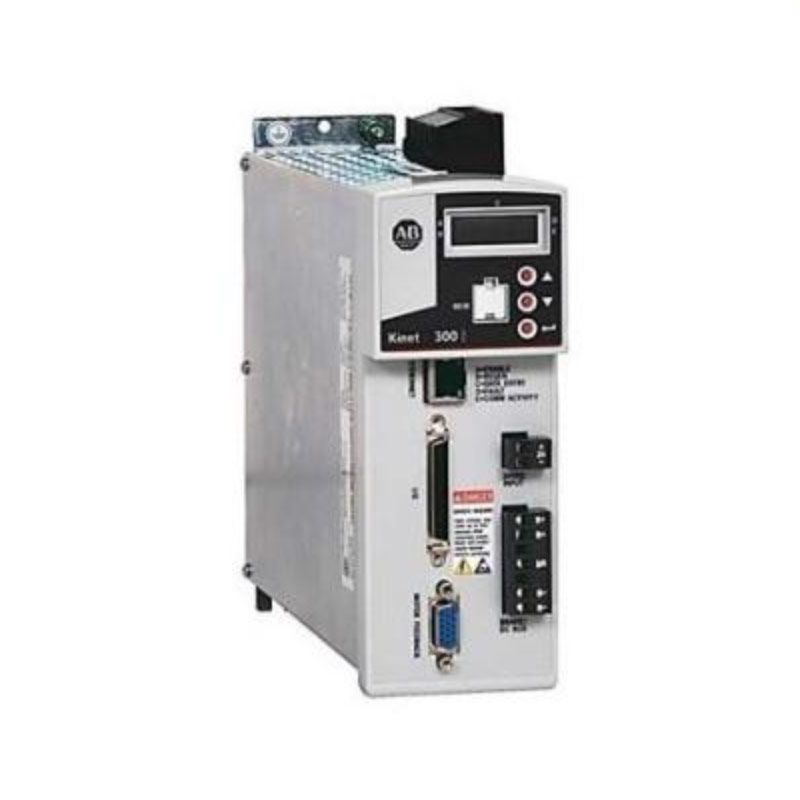Description

1.Product Overview
The ABB SAFT187 PLC is a pivotal component within ABB’s suite of industrial control solutions.Engineered to meet the demands of diverse industrial applications,it serves as a reliable and versatile controller,facilitating seamless automation processes.This PLC is designed to handle a wide array of control tasks,from basic logic operations to more complex control sequences,making it an ideal choice for industries seeking to enhance their production efficiency and control precision.
2.Key Features
2.1 Input/Output Capabilities
The SAFT187 PLC is equipped with a comprehensive set of digital and analog input and output channels.It features multiple digital input channels,capable of detecting binary signals from various sensors such as proximity switches,limit switches,and pushbuttons.These inputs can operate at standard industrial voltages,typically 24V DC,ensuring compatibility with a wide range of field devices.The digital output channels,on the other hand,can drive relays,solenoids,and other actuators,with a rated load capacity that allows for the control of high-current devices.
In terms of analog inputs,the SAFT187 can accept signals from sensors like temperature sensors,pressure transducers,and flow meters.It supports a variety of input ranges,such as 0-10V DC,4-20mA,enabling it to interface with different types of analog-outputting sensors.The analog output channels can be used to control variable-speed drives,proportional valves,and other devices that require a continuously variable control signal.
2.2 Logic and Arithmetic Operations
This PLC is proficient in performing a wide range of logic and arithmetic operations.It can execute basic logic functions such as AND,OR,NOT,XOR,which are fundamental for implementing control logic in industrial processes.For example,in a manufacturing assembly line,logic operations can be used to determine whether a product has passed through all the necessary inspection stations before being sent to the next stage.
In addition to logic operations,the SAFT187 can perform arithmetic calculations including addition,subtraction,multiplication,and division.These arithmetic capabilities are useful in applications where precise control of variables is required.For instance,in a chemical process,the PLC can calculate the correct dosage of raw materials based on the desired product output and the current process conditions.
2.3 Timing and Counting Functions
Timing and counting functions are integral to the SAFT187 PLC’s capabilities.It offers multiple timer functions,such as on-delay timers,off-delay timers,and retentive timers.On-delay timers can be used to start a particular action after a set time delay.For example,in a heating process,an on-delay timer can be used to turn off the heater after the temperature has been maintained at a certain level for a specified period.
The counting functions allow the PLC to count events,such as the number of products passing through a conveyor belt or the number of times a machine has cycled.There are both up-counters and down-counters available.Up-counters increment with each detected event,while down-counters decrement.These counting functions are crucial for inventory control,production monitoring,and quality control in industrial settings.
2.4 Communication Capabilities
The SAFT187 PLC supports a variety of communication protocols,enabling seamless integration with other devices and systems within an industrial network.It is compatible with Ethernet-based protocols,such as Modbus TCP and Profinet.Modbus TCP allows for easy communication with other Modbus-compliant devices,facilitating data exchange between the PLC and sensors,actuators,and other controllers.Profinet,on the other hand,is a high-performance industrial Ethernet standard that provides real-time communication capabilities,making it suitable for applications where fast data transfer is critical,such as in high-speed manufacturing processes.
In addition to Ethernet protocols,the PLC also supports serial communication protocols like RS-232 and RS-485.These serial interfaces can be used to connect to devices that do not have an Ethernet interface,such as older-generation sensors or some types of human-machine interfaces(HMIs).This wide range of communication options ensures that the SAFT187 PLC can be integrated into both modern and legacy industrial control systems.
3.Application Scenarios
3.1 Manufacturing Industry
In manufacturing plants,the ABB SAFT187 PLC plays a crucial role in automating production processes.For example,in an automotive assembly line,the PLC can control the movement of robotic arms that perform tasks such as welding,painting,and part assembly.It can also manage the conveyor systems that transport the car parts from one workstation to another.By precisely controlling the timing and sequence of these operations,the SAFT187 helps to improve production efficiency,reduce errors,and increase overall productivity.
In a packaging plant,the PLC can be used to control the filling,sealing,and labeling processes.It can ensure that the correct amount of product is filled into each package,the packages are properly sealed,and the labels are accurately applied.The SAFT187’s ability to handle multiple input and output signals allows it to interface with various sensors and actuators used in the packaging process,such as level sensors for filling,proximity sensors for detecting package positions,and motors for driving the labeling machinery.
3.2 Process Industries
In the chemical industry,the SAFT187 PLC is used to control complex chemical processes.It can monitor and control variables such as temperature,pressure,flow rate,and chemical composition.For example,in a chemical reactor,the PLC can adjust the flow of reactants based on the temperature and pressure inside the reactor to ensure optimal reaction conditions.It can also activate safety systems,such as emergency shutdown valves,in case of abnormal conditions.
In the food and beverage industry,the PLC is used for process control and quality assurance.It can control the pasteurization process in milk production,ensuring that the milk is heated to the correct temperature for the right amount of time to kill harmful bacteria while maintaining the quality of the product.In a brewery,the SAFT187 can manage the fermentation process,controlling factors such as temperature,pH level,and the addition of ingredients at the appropriate stages of fermentation.
3.3 Infrastructure and Utilities
In water treatment plants,the ABB SAFT187 PLC is used to control the various processes involved in treating water,such as filtration,disinfection,and water distribution.It can monitor the water quality parameters,such as turbidity,pH,and chlorine levels,using sensors and adjust the treatment processes accordingly.For example,if the turbidity of the water exceeds a certain limit,the PLC can increase the flow rate of the filter or activate additional filtration units.
In power generation plants,the PLC can be used to control the operation of generators,turbines,and other power-related equipment.It can monitor the voltage,frequency,and power output of the generators and adjust the speed of the turbines to maintain stable power generation.The SAFT187 can also interface with other systems in the power plant,such as the supervisory control and data acquisition(SCADA)system,to provide real-time data on the plant’s operation.
4.Technical Principles
4.1 Hardware Architecture
The SAFT187 PLC is built on a robust hardware platform.It consists of a central processing unit(CPU)that serves as the brain of the PLC,responsible for executing the control logic and performing calculations.The CPU is designed to handle high-speed processing,ensuring quick response times to input signals and rapid execution of control commands.
The input and output modules are separate components that interface with the external devices.These modules are designed to isolate the internal circuitry of the PLC from the external electrical environment,protecting the PLC from voltage spikes,electrical noise,and other potential hazards.The input modules convert the external signals into a format that can be understood by the CPU,while the output modules convert the CPU’s control signals into signals that can drive the external actuators.
The power supply module provides the necessary electrical power to the PLC components.It is designed to be stable and reliable,with features such as over-voltage protection,under-voltage protection,and short-circuit protection.This ensures that the PLC can operate continuously even in the presence of power fluctuations in the industrial environment.
4.2 Software and Programming
The SAFT187 PLC supports programming languages compliant with the IEC 61131-3 standard.This includes languages such as Ladder Diagram(LD),Function Block Diagram(FBD),and Structured Text(ST).Ladder Diagram is a graphical programming language that is widely used in the PLC industry due to its similarity to electrical relay logic diagrams.It allows engineers to easily design and understand the control logic.
Function Block Diagram is another graphical language that represents control functions as blocks.These blocks can be interconnected to create complex control systems.Structured Text,on the other hand,is a text-based programming language similar to Pascal.It is useful for implementing complex algorithms and calculations within the PLC.
The programming software provided by ABB allows engineers to create,edit,and download programs to the SAFT187 PLC.The software also includes features such as debugging tools,which help engineers to identify and fix errors in the control logic.It can simulate the operation of the PLC,allowing for testing of the control program before it is deployed in the actual industrial environment.
5.Comparison with Competitors
Compared to some of its competitors in the PLC market,the ABB SAFT187 PLC offers several distinct advantages.One of the key differentiators is its wide range of communication capabilities.While some competing PLCs may be limited to a few communication protocols,the SAFT187 supports multiple Ethernet and serial protocols,providing greater flexibility in integrating with different types of devices and systems.
In terms of input/output capabilities,the SAFT187 offers a higher density of I/O channels in a compact form factor compared to some competitors.This means that more sensors and actuators can be connected to the PLC without the need for a large number of additional expansion modules,reducing the overall cost and complexity of the control system.
The SAFT187 also stands out in terms of its reliability.ABB’s reputation for high-quality manufacturing and its use of robust components in the PLC design contribute to its ability to withstand harsh industrial environments.Competitors may have issues with reliability in extreme temperature,humidity,or vibration conditions,but the SAFT187 is designed to operate consistently under such challenging conditions.
6.Installation and Maintenance
6.1 Installation
Installing the ABB SAFT187 PLC is a relatively straightforward process.First,ensure that the installation environment meets the requirements in terms of temperature,humidity,and electrical noise.The PLC is typically mounted in a 19-inch rack,which provides a standard and secure mounting solution.
Connect the power supply to the PLC,making sure to follow the correct wiring diagram to avoid electrical hazards.The input and output connections are made by connecting the wires from the sensors and actuators to the appropriate terminals on the input and output modules.It is important to use proper shielding and grounding techniques to minimize electrical interference.
After the physical connections are made,the programming software can be used to configure the PLC.This includes setting up the communication parameters,defining the input and output channels,and downloading the control program.
6.2 Maintenance
Regular maintenance is essential to ensure the optimal performance and long-term reliability of the SAFT187 PLC.Periodic visual inspections should be carried out to check for any signs of physical damage,such as loose connections,overheating,or corrosion.The PLC’s diagnostic LEDs can provide valuable information about its operational status.For example,a flashing red LED may indicate a hardware fault,while a steady green LED indicates normal operation.
Software-based diagnostic tools can also be used to monitor the PLC’s performance.These tools can detect issues such as memory leaks,abnormal CPU usage,and communication errors.Regular firmware updates should be installed to ensure that the PLC has the latest features,bug fixes,and security patches.
In case of a fault,the first step is to identify the source of the problem using the diagnostic tools.If the fault is due to a hardware issue,such as a failed input module,the module can be replaced.ABB provides a range of spare parts,making it easy to replace faulty components.If the fault is software-related,the control program can be debugged and corrected.
7.Future Developments and Outlook
As technology continues to advance,ABB is likely to introduce further enhancements to the SAFT187 PLC.One area of development could be in the area of cybersecurity.With the increasing connectivity of industrial systems,ensuring the security of the PLC from cyber threats will be crucial.Future versions of the SAFT187 may include enhanced security features such as encryption of data in transit,secure authentication mechanisms,and intrusion detection systems.
Another area of potential development is in the integration of artificial intelligence and machine learning capabilities.These technologies can be used to optimize the control logic of the PLC,predict equipment failures,and improve overall process efficiency.For example,machine learning algorithms could analyze historical data from the PLC’s sensors to predict when a particular piece of equipment is likely to fail,allowing for proactive maintenance and reducing unplanned downtime.
In terms of communication,we may see the SAFT187 PLC supporting even more advanced industrial Ethernet protocols,such as Time-Sensitive Networking(TSN),which offers deterministic communication with extremely low latency.This will be beneficial for applications where precise timing and synchronization of devices are critical,such as in high-speed motion control systems.
In conclusion,the ABB SAFT187 PLC is a powerful and versatile industrial control solution that has found widespread use in various industries.Its combination of features,reliability,and ease of use make it a top choice for engineers and plant managers looking to automate their industrial processes.With continued technological advancements,the SAFT187 is likely to remain a relevant and competitive product in the PLC market for years to come.
 WhatsApp:+86 18150087953 WeChat: +86 18150087953
WhatsApp:+86 18150087953 WeChat: +86 18150087953  Email:
Email:

